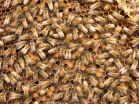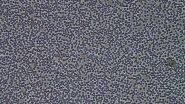What to do with kidneys from older deceased donors?
Study reveals which patients on the transplant waiting list are most likely to benefit from such organs
2015-03-26
(Press-News.org) Highlights
For older patients in need of a kidney transplant, rapid transplantation from an older deceased donor is superior to delayed transplantation from a younger donor.
Kidneys from older donors do not have sufficient longevity to provide younger patients with a lifetime of kidney function, but they do have sufficient longevity to provide older patients who have a shorter life expectancy with a lifetime of kidney function.
More than 100,000 people in the United States are waiting for a kidney transplant.
Washington, DC (March 26, 2015) -- A new study highlights the best way to use kidneys from older deceased donors, providing the most benefits to patients and addressing the worsening organ shortage. The study's findings, which appear in an upcoming issue of the Journal of the American Society of Nephrology (JASN), could lead to changes in current transplant allocation policies.
The number of patients waiting for a kidney transplant in the United States recently eclipsed 100,000, yet most kidneys recovered from deceased donors aged 65 years or older are discarded.
To investigate how to optimally increase the use of such "expanded criteria donor kidneys," a team led by John Gill MD, MS, Caren Rose, PhD, (University of British Columbia, in Canada), and Elke Schaeffner, MD (Charité University Medicine, in Berlin) conducted a series of analyses of data from the Eurotransplant Senior Program and the United States Renal Data System. They found that in patients in need of a transplant who are at least 60 years old, rapid transplantation from an older deceased donor is superior to delayed transplantation from a younger donor. The researchers also discovered that kidneys from older donors do not have sufficient longevity to provide younger patients with a lifetime of kidney function, but they do have sufficient longevity to provide older patients who have a shorter life expectancy with a lifetime of kidney function.
"Older patients derive a survival benefit from rapid transplantation with an older donor kidney, while younger patients do not derive a benefit from transplantation from an older kidney," said Dr. Gill. "Ensuring older patients can access older donor kidneys should be a priority in the United States. This may involve increased utilization of older donor kidneys or possibly excluding younger patients from receiving these kidneys."
INFORMATION:
Study co-authors include Ulrich Frei, MD and Jagbir Gill MD, MS.
Disclosures: The authors reported no financial disclosures.
The article, entitled "A Lifetime of Allograft Function with Kidneys from Older Donors," will appear online at http://jasn.asnjournals.org/ on March 26, 2015.
The content of this article does not reflect the views or opinions of The American Society of Nephrology (ASN). Responsibility for the information and views expressed therein lies entirely with the author(s). ASN does not offer medical advice. All content in ASN publications is for informational purposes only, and is not intended to cover all possible uses, directions, precautions, drug interactions, or adverse effects. This content should not be used during a medical emergency or for the diagnosis or treatment of any medical condition. Please consult your doctor or other qualified health care provider if you have any questions about a medical condition, or before taking any drug, changing your diet or commencing or discontinuing any course of treatment. Do not ignore or delay obtaining professional medical advice because of information accessed through ASN. Call 911 or your doctor for all medical emergencies.
Founded in 1966, and with more than 15,000 members, the American Society of Nephrology (ASN) leads the fight against kidney disease by educating health professionals, sharing new knowledge, advancing research, and advocating the highest quality care for patients.
ELSE PRESS RELEASES FROM THIS DATE:
2015-03-26
Honey bees use different sets of genes, regulated by two distinct mechanisms, to fight off viruses, bacteria and gut parasites, according to researchers at Penn State and the Georgia Institute of Technology. The findings may help scientists develop honey bee treatments that are tailored to specific types of infections.
"Our results indicate that different sets of genes are used in immune responses to viruses versus other pathogens, and these anti-viral genes are regulated by two very distinct processes -- expression and DNA methylation," said David Galbraith, graduate ...
2015-03-26
(Boston) - Genes appear to play a stronger role in longevity in people living to extreme older ages, according to a study of siblings led by Boston University and Boston Medical Center (BMC) researchers.
The study, published online in the Journal of Gerontology: Biological Sciences, found that for people who live to 90 years old, the chance of their siblings also reaching age 90 is relatively small - about 1.7 times greater than for the average person born around the same time. But for people who survive to age 95, the chance of a sibling living to the same age is 3.5 ...
2015-03-26
Why does it seem as if a dark band ripples through a flock of European starlings that are steering clear of a falcon or a hawk? It all lies in the birds' ability to quickly and repeatedly dip to one side to avoid being attacked. For a split second, these zigs change the view that observers on the ground have of the birds' wings to cause a so-called agitation wave. This evasive strategy is copied as quick as a flash from one neighboring bird to the next. The escape behavior underlying this was discovered in a study led by Charlotte Hemelrijk of the Centre for Ecology and ...
2015-03-26
Rockville, Md. (March 26, 2015) -- The motion of coins in a "Penny Pusher" carnival game is similar to the movement of cells in the eye's lens, as described in a new study published in Investigative Ophthalmology & Visual Science (IOVS). This new insight may help scientists understand how the eye maintains its precise shape -- critical for clear vision -- and how cataracts develop.
"If the size, shape or position of the eye is not carefully regulated, we simply will not see clearly," said author Steven Bassnett, PhD, of Washington University School of Medicine, Department ...
2015-03-26
Life expectancy for Hispanics in the U.S. currently outpaces other ethnic groups, yet a new study finds that Mexican Americans -- especially women who were born in Mexico -- are spending a high proportion of their later years with some form of disability, a fact that suggests a growing need for community assistance and long-term care in the future.
These findings are reported in a new article published online in The Journals of Gerontology, Series B: Psychological and Social Sciences titled "Longer Lives, Sicker Lives? Increased Longevity and Extended Disability Among ...
2015-03-26
Nobody likes getting the flu, but for some people, fluids and rest aren't enough. A small number of children who catch the influenza virus fall so ill they end up in the hospital -- perhaps needing ventilators to breathe -- even while their family and friends recover easily. New research by Rockefeller University scientists, published March 26 in Science, helps explain why: a rare genetic mutation.
The researchers scrutinized blood and tissue samples from a young girl who, at the age of two-and-a-half, developed acute respiratory distress syndrome after catching the flu, ...
2015-03-26
CAMBRIDGE, Mass., March 26, 2015 - Newly published research from the Forsyth Institute details a discovery explaining why the 100 million Americans estimated to be taking prescription and over-the-counter antacid and heartburn medications may be at an increased risk of bone fractures.
The new report from Forsyth, published in the March issue of the prestigious medical research journal PLOS Genetics, explains that stomach acid in the gastrointestinal tract plays an important role in helping the intestines absorb and transfer calcium to the skeletal system. While the ...
2015-03-26
Genetic defects affecting tiny channels in human nerve cells lead to several neurological diseases that result from aberrant nerve transmission, such as episodic ataxia, absence epilepsy, and migraines. These disorders have also been associated with neurodegeneration, but it has been less clear why this should be.
The transmission of nerve impulses requires the perfect orchestration of a series of complex cellular events in a matter of fractions of a second. The membrane that surrounds a nerve cell is normally electrically polarized, but a nerve impulse triggers a Mexican ...
2015-03-26
MADISON, Wis. -- An Ebola whole virus vaccine, constructed using a novel experimental platform, has been shown to effectively protect monkeys exposed to the often fatal virus.
The vaccine, described today (March 26, 2015) in the journal Science, was developed by a group led by Yoshihiro Kawaoka, a University of Wisconsin-Madison expert on avian influenza, Ebola and other viruses of medical importance. It differs from other Ebola vaccines because as an inactivated whole virus vaccine, it primes the host immune system with the full complement of Ebola viral proteins and ...
2015-03-26
Orchestrated costume changes make it possible for certain nasty microbes to outsmart the immune system, which would otherwise recognize them by the telltale proteins they wear. By taking the first detailed look at how one such parasite periodically assumes a new protein disguise during a long-term infection, new research at Rockefeller University challenges many assumptions about one of the best-known examples of this strategy, called antigenic variation, in the parasite that causes African sleeping sickness.
For research published on March 27 in Science, a team at Rockefeller ...
LAST 30 PRESS RELEASES:
[Press-News.org] What to do with kidneys from older deceased donors?
Study reveals which patients on the transplant waiting list are most likely to benefit from such organs


